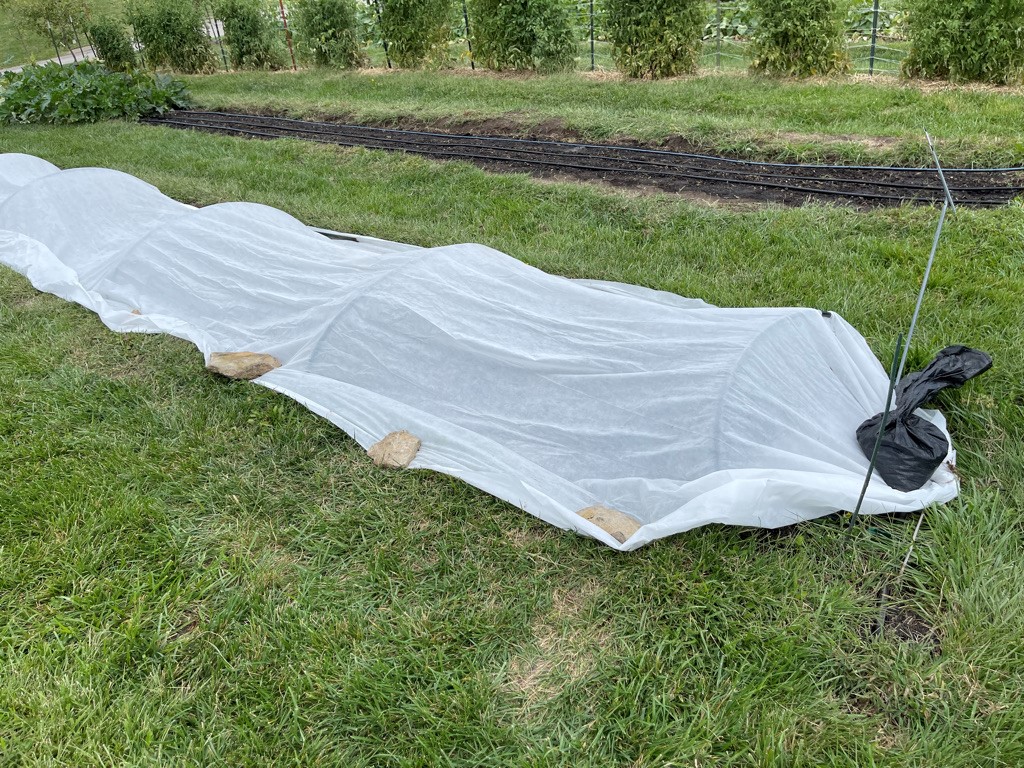Using Row Covers

With cooler weather looming and frosts on the not-so-distant horizon, vegetable gardeners may soon be looking into a standard method of exercising season extension: the use of low tunnels. These typically consist of floating row cover cloth or polyethylene film and wires or tubing fashioned into low hoops. Utilizing them provides a means for gardeners to keep frost off plants and keep the soil and air within the covers insulated. This will help stretch a garden’s growing season for several weeks until a hard ground freeze finally occurs. However, material selection will be crucial depending on what a gardener aims to achieve. The two types of material offer different levels of protection.
Row cover cloth is intended for less intense weather and temperature conditions, aka, for preventing damage from light frosts with up to 4 degrees of temperature protection past freezing. With this material being both lightweight and breathable, moisture and light are still readily allowed to filter through it, making them accessible to plants. This allows many of your more tender fall crops, such as lettuce, spinach, and root vegetables, enough leeway to continue prospering into late fall without entirely cutting them off from the elements.
The polyethylene film option offers protection for gardeners looking to extend their plant protection far beyond a light frost. An effective insulator, this material creates a mini greenhouse for the plant life it supports. Though not fool-proof, this cover provides up to 8 degrees of protection for plants past freezing, making it practical to protect warm-season fruiting vegetables, such as tomatoes or peppers, that have managed to carry over to the end of the season.
In either of these scenarios, it is important to note that this protection does not last forever in the Kansas City area. The plants within them will eventually succumb to the bitter winter cold we endure, particularly from late December through February. Even when using heavy-duty protection, the greenhouse effect will only be able to go so far as the physical air temperatures surrounding the low tunnels create rapid freeze-thaw scenarios. The air temperature within the tunnels will still fluctuate, and eventually lead to their decline.
Even so, low tunnels have much to offer for the time they can be utilized. Remember that securing covers will be critical to the success of the insulation provided. You can achieve this by simply pinning down the covering with sandbags, bricks, rocks, boards, or other weights. It is not recommended to utilize landscaping staples. This will encourage tearing of the material. Tying the ends off and securing them to a stake or t-post, in combination with adding rope reinforcement over the covers, will keep covers in place through wind and weather events they may encounter.
Row covers are a powerful tool for extending the growing season, but their success hinges on one crucial factor: proper setup and upkeep. By ensuring the covers are securely in place and well-maintained, gardeners can take control of their growing season and maximize their harvest.

by Anthony Reardon, Horticulture Small Farms Agent, 2024
Have questions?
The Garden Hotline is staffed by trained EMG volunteers and Extension staff who will assist you with questions.
Phone: (913) 715-7050
Email: garden.help@jocogov.org